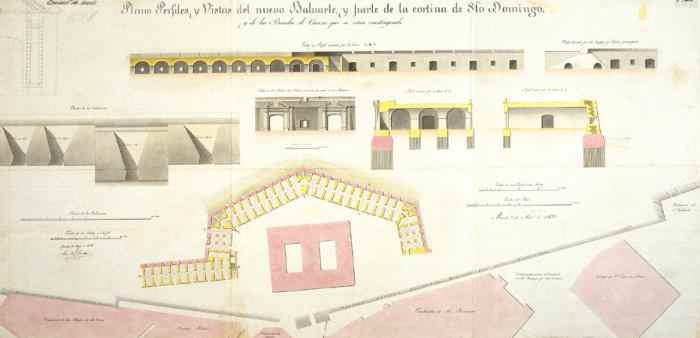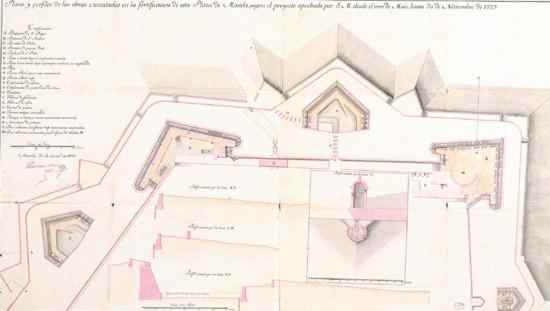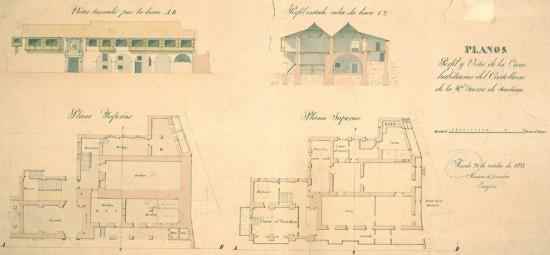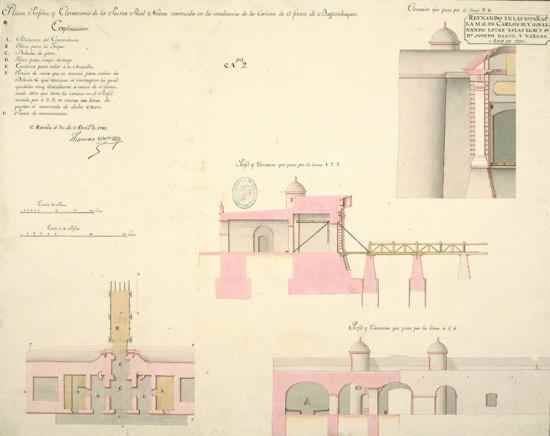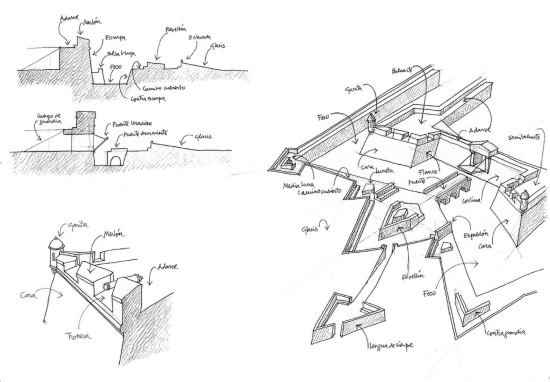| Plan and sectional view of the San Pedro redoubt. Tomás Sanz. 1781. AGI This was sited facing the sea, to the south of Intramuros. Its ground plan was square and it was constructed on the outer side of the city wall but access to the interior was provided by a narrow passageway. |

